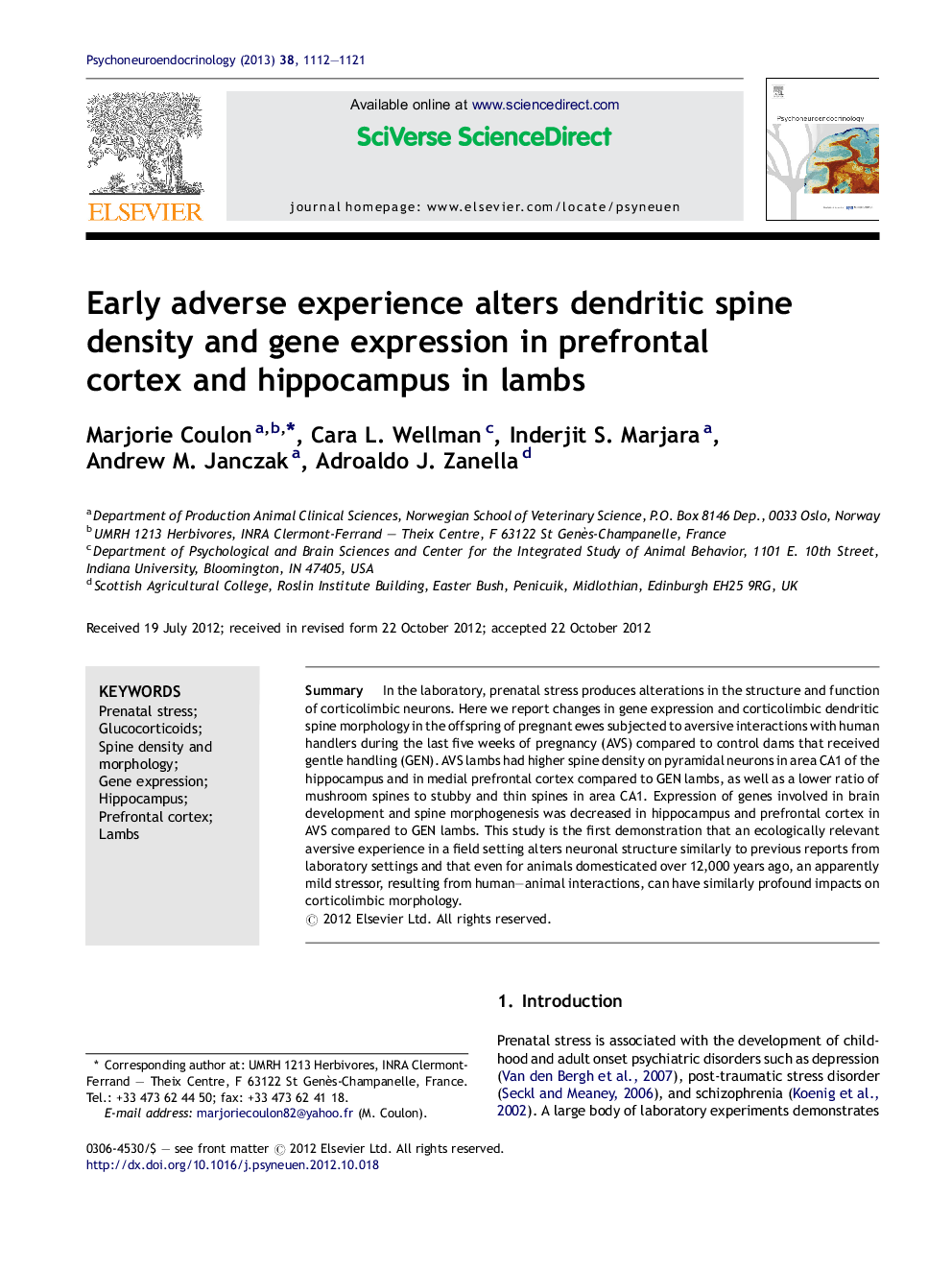| Article ID | Journal | Published Year | Pages | File Type |
|---|---|---|---|---|
| 336475 | Psychoneuroendocrinology | 2013 | 10 Pages |
SummaryIn the laboratory, prenatal stress produces alterations in the structure and function of corticolimbic neurons. Here we report changes in gene expression and corticolimbic dendritic spine morphology in the offspring of pregnant ewes subjected to aversive interactions with human handlers during the last five weeks of pregnancy (AVS) compared to control dams that received gentle handling (GEN). AVS lambs had higher spine density on pyramidal neurons in area CA1 of the hippocampus and in medial prefrontal cortex compared to GEN lambs, as well as a lower ratio of mushroom spines to stubby and thin spines in area CA1. Expression of genes involved in brain development and spine morphogenesis was decreased in hippocampus and prefrontal cortex in AVS compared to GEN lambs. This study is the first demonstration that an ecologically relevant aversive experience in a field setting alters neuronal structure similarly to previous reports from laboratory settings and that even for animals domesticated over 12,000 years ago, an apparently mild stressor, resulting from human–animal interactions, can have similarly profound impacts on corticolimbic morphology.
